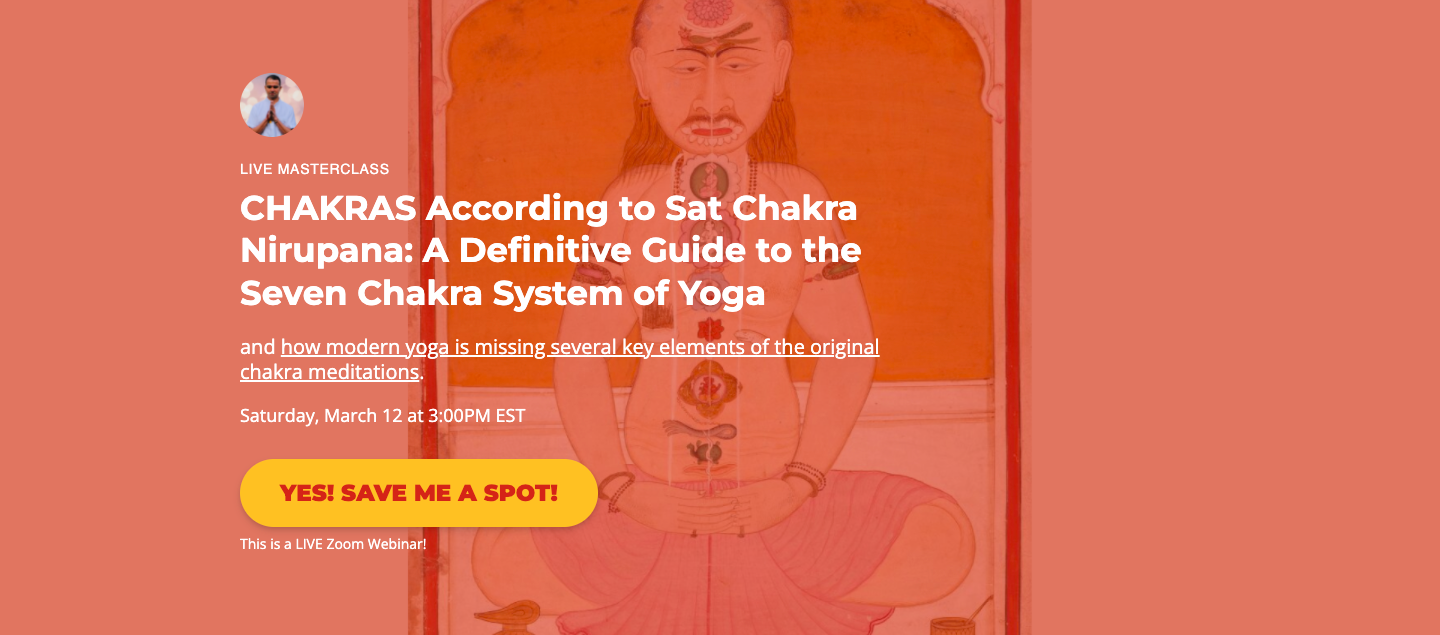Sahasrara Chakra: The abode of the Supreme Guru
By Devendra Narayan, PhD.

Credit: MS Sanskrit 391. Authored by Svami Hamsasvarupa, 1900s. Wellcome Collection. The original image has been modified for use in this article.
- Sahasrara is the thousand-petalled lotus (chakra) located at the peak of the Shankhini nadi.
- Trikona shakti (triangular yantra) is the secret abode of guru within the Sahasrara.
- Through meditation, virtuous practitioners receive many secrets from the Sahasrara chakra, which lead to higher knowledge and liberation.
For the past few months, I have been studying a text about chakras. A seminal text on the seven chakra system that is popular in modern yoga today, Sat Chakra Nirupana was written by Swami Purnananda in 1577 and translated into Hindi in the early 1900s by Swami Hansa Swaroop Maharaj.
Within this text, we find explanations of the lotus architecture of each chakra, the elements and their sounds (bija mantras), the sounds of the petals, the deities residing within each chakra, animals, yantras, and secret portals leading to higher dimensions of wisdom, wealth, and liberation.
Sat Chakra Nirupana is a complete text on chakras that has not been widely studied or applied in chakra or chakra meditation practice. The series of articles I have written on this book should help a sincere yoga practitioner learn about the detailed architecture of the seven chakras, which are much more than energy centers. Chakras are sacred cities in the subtle body.
In this article, I present the architecture of the seventh holy city in the body, the thousand-petalled lotus chakra, Sahasrara.
Sahasrara Chakra
.png)
Credit: MS Sanskrit 391. Authored by Svami Hamsasvarupa, 1900s. Wellcome Collection. The original image has been modified for use in this article.
Located above the Ajna chakra, at the peak of the Shankhini nadi, and below the shakti called Visarga, which is spread out in space, is the thousand petalled lotus-shaped Sahasrara chakra. It is auspicious in the same way as a full moon and shines with the brightness of the early morning sun. As with Muladhara chakra, Sahasrara chakra also points downward (adhomukha). The thousand petals of this lotus resonate with the 50 phonemes (sounds) of Sanskrit alphabet from aa to ksha. Twenty petals are braided together and feature the same Sanskrit alphabet. In this way, we get the 1000 petals of the Sahasrara chakra.
50 phonemes of Sanskrit x 20 braided petals = 1000 total petals of Sahasrara
In the middle of the Sahasrara chakra shines a sparkling full moon that illuminates all ten directions. Within this moon, a triangular yantra shines as bright as lightning. Shunya Brahma, who is revealed through meditation, lies hidden within it.
An aspect of meditation being kept secret should be the bulb above the supreme guru that is filled with eternal happiness.
In the triangular yantra, we find Param Shiva, who dispels ignorance and grants self-realisation to those of the purest mind. Also within the triangular yantra is Paramhansa, who represents the ocean of bliss.
.png)
Credit: MS Sanskrit 391. Authored by Svami Hamsasvarupa, 1900s. Wellcome Collection. The original image has been modified for use in this article.
There are many names for this place within the triangular yantra. The Shaivites (those who worship Shiva) call it abode of Shiva, the Vaishnavites (those who worship Vishnu) call it abode of Vishnu, and those who worship the divine feminine call it abode of Shakti or abode of prakriti and purusha. No matter what faith, religion, or spiritual practice you follow, you can see the One who represents divine grace here.
According to Sat Chakra Nirupana, a person who meditates with a steady mind at the divinity within the triangular yantra becomes a superior yogi and transcends the cycle of birth and death.
In the triangular yantra also resides the ultra-fine (1/100 the size of the stem of a lotus flower) and ultra-bright feminine energy, Ana Shakti with the nectar of immortality (amrut) flowing from her hands.
Nirvana Shakti is another feminine energy that is ultrafine (1/1000 of the thickness of a single hair strand), super bright (brightness equal to 12 Suns) and supremely divine that resides next to Ana Shakti. She is also called Mahakundalini.
This is where the door to the 4th state of spirit (Turiya) is found at the center of Nirvana Shakti. Many names are given to this location, including the location of eternal light, the abode of Brahma, the abode of Shiva, and the entrance to liberation. This place is revealed to the virtuous yogis through the power of meditation.
As interpreted by the author from Swami Shri Hansa Swaroop Maharaj's Hindi version of Sat Chakra Nirupana Chitra, this concludes the translation of the 7 chakras. Next, this book describes how to raise the Kundalini shakti by mental suspension of the breath. Swami Hansa Swaroop's steps require knowledge and practice of Pranayama. In the next article, I will discuss Pranayama before outlining the steps to raise the Kundalini.
About the Author
Devendra Narayan is a scientist, yoga teacher, breathworker, scholar and founder of Cultivate Prana Academy. Cultivate Prana's mission is to empower modern day healers through education that integrates ancient wisdom and modern science.
Reference:
- Svāmihaṃsasvarūpakr̥tam Ṣaṭcakranirūpaṇacitram : bhāṣyasamalaṃkr̥taṃ bhāṣāṭīkopetañ ca = Shatchakra niroopana chittra with bhashya and bhasha containing the pictures of the different nerves and plexuses of the human body with their full description showing the easiest method how to practise pranayam by the mental suspension of breath through meditation only ; by Shri Swami Hansa Swaroop.
-------
Copyright 2021 Cultivate Prana. All rights reserved.

